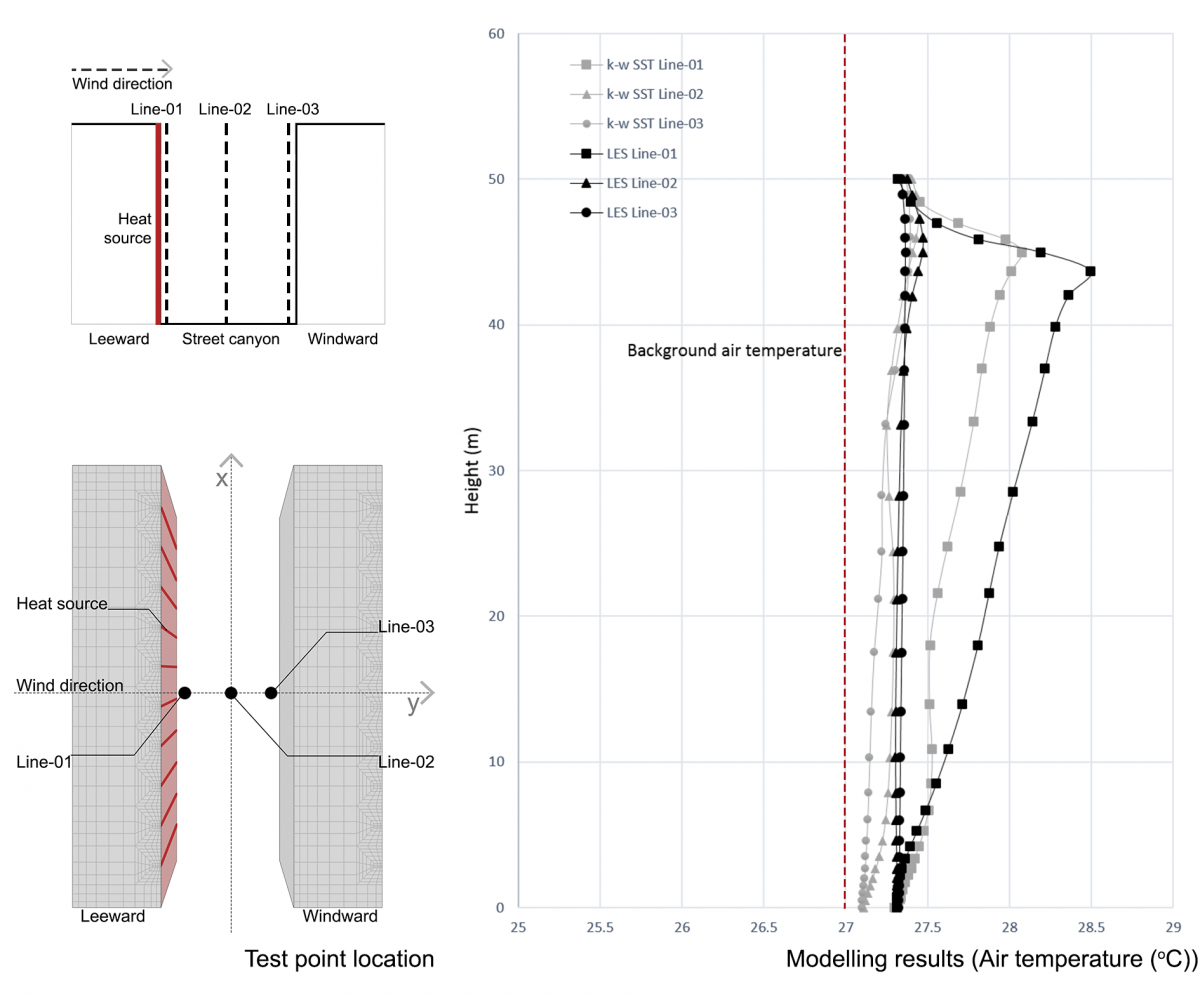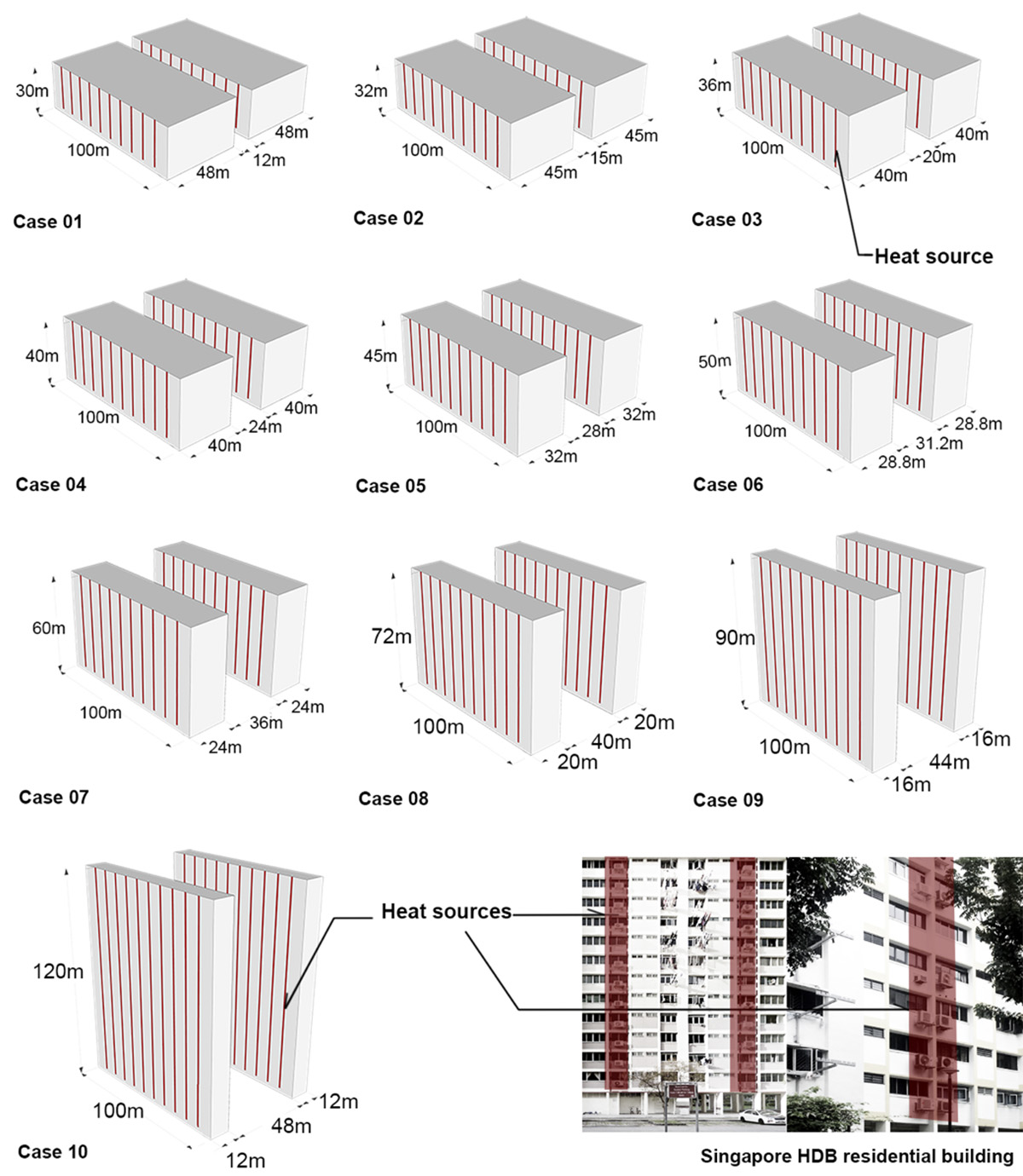Anthropogenic Heat
Computational Parametric Study (Building Scale)

Impact of Anthropogenic Heat Emission on Nighttime Air Temperature in Street Canyon
Building air-conditioning (AC) system requires the largest portion of building electricity demand and has a direct effect on the urban thermal environment by rejecting the accumulated heat from the building’s interior to the urban atmosphere in order to achieve indoor thermal comfort.
This research aims to understand the impact of building permeability on heat dispersion and to provide scientific-based design guidelines to support architecture design practice. A parametric study is performed by using the Computational Fluid Dynamics (CFD) simulation method.
The results indicate that emission position and building porosity play an important role in anthropogenic heat removal from the street canyon.
Outputs:
- The CFD model is validated against wind tunnel data, and the validation result suggests that SST k-ω can reproduce the mixed convection, caused by input air flow and buoyancy effect, within the street canyon;
- Results of parametric study indicate that emission position and building porosity play an important role in anthropogenic heat removal from the street canyon;
- Single strategy, such as building height variance, can help to reduce the street canyon temperature to some extent, but the impact can be more significant when it is coupled with other strategies;
- This study bridges the knowledge gap between the complex aerodynamic physics and the real urban planning and design practices;
- A case study is conducted to evaluate the practicability of the suggested mitigation strategies in real urban design practice;
Publications:
- Adelia AS, Yuan C, Liu L, Shan RQ, 2019, Effects of urban morphology on anthropogenic heat dispersion in high-density tropical cities, Energy and Buildings, 186, pp 368-383.
Conference Presentation:
- Adelia AS, Yuan C, Shan RQ, 2018, Effects of urban morphology on anthropogenic heat dispersion in high-density tropical cities, Proceeding in the 10th International Conference on Urban Climate (ICUC 10). New York, U.S.
- Mei SJ and Yuan C, 2020, The Contribution of Anthropogenic Heat on Urban Air Temperature Elevation: A Case Study of the Singapore Residential area, Proceeding in Passive Low Energy Architecture Design to Thrive (PLEA). A Coruña, Spain.

Figure. Ten parametric cases with various site coverage ratios and frontal area densities.